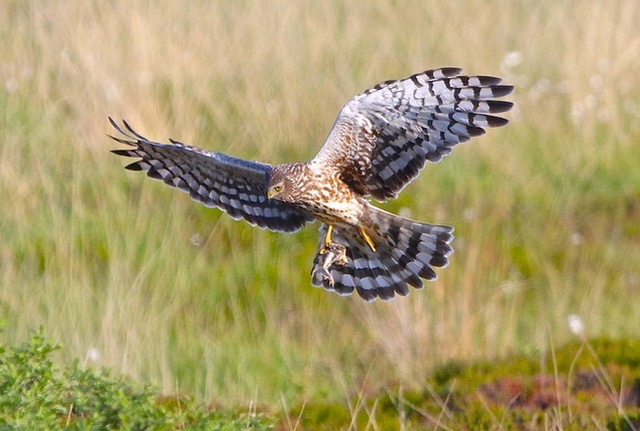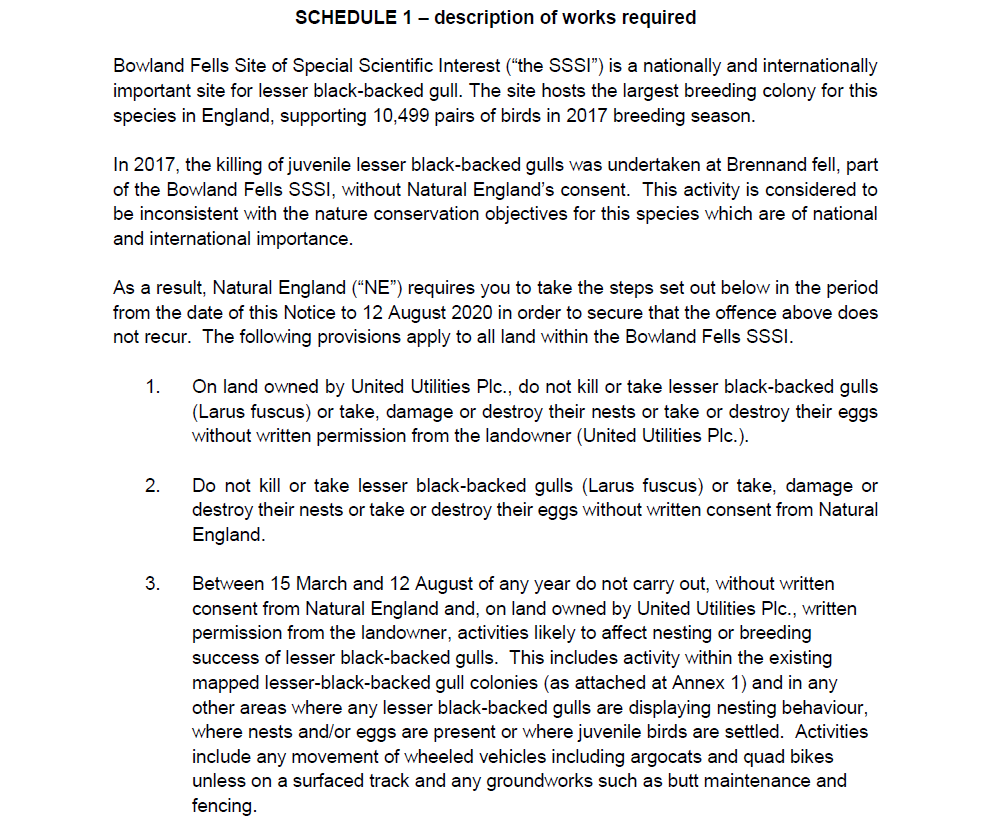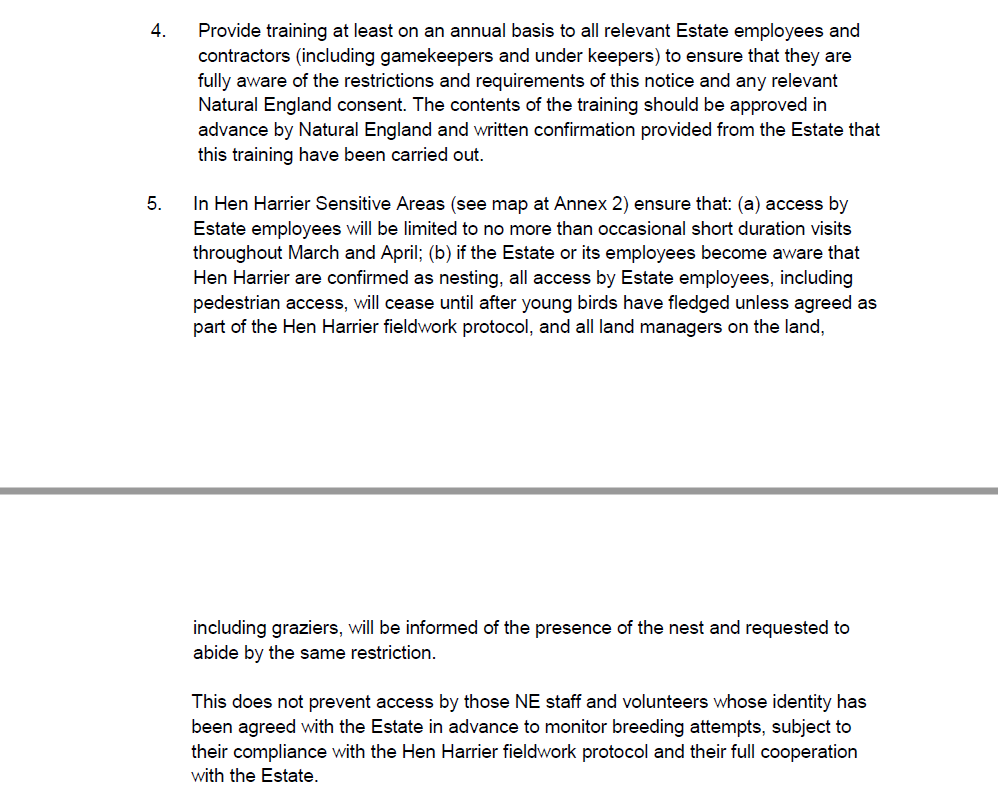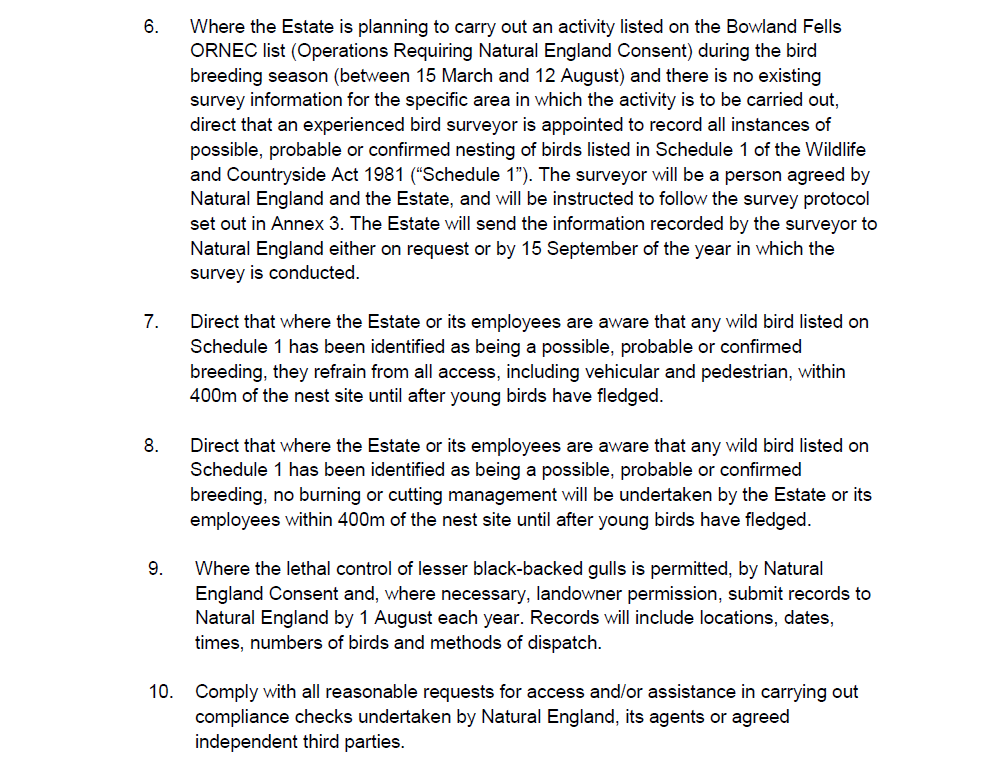The Bowland Fells SPA sits between Lancaster and Clitheroe, and High Bentham and Longridge, east of the M6 in Lancashire. It was classified in 1993 and one of the qualifying criteria was the number of nesting pairs of Hen Harriers (13) at that time. For a long time Bowland was the English stronghold of this highly-persecuted bird, and although that could again be true, it is no longer the case, with Northumberland having taken over that mantle.
If the Bowland Hen Harrier population could return to 13 pairs that would be regarded as a phenomenal recovery – this year there were three successful nests in Bowland. The whole English Hen Harrier population was only 14 pairs this year and that was the highest for many years. It would be a great service if someone, or perhaps a group of people, could bring together a definitive historical summary of Hen Harrier pairs in Bowland over the last 40 years – this blog by the RSPB’s former Regional Officer in the area, John Armitage, is now out of date but represents the closest to an account that I can find.
In some of the documents that I have received from Natural England as a result of FOI requests, mostly about Lesser Black-backed Gulls, I have become more aware of the areas of Bowland that have been mapped as ‘Hen Harrier Sensitive Areas’ (HHSAs) and form part of the agreements between NE and local landowners.

Of the total 16,000ha of the Bowland Fells SPA, around 325ha (estimated from maps by me) are in HHSAs. That’s a small proportion (2%) of the total area but presumably these are the areas that historically have been most important for Hen Harriers in this moorland block (and that’s why I’m not reproducing the map here).
So how are the HHSAs distributed across the land ownerships in Bowland? This is interesting considering that we are sometimes told that Hen Harriers thrive on intensively managed driven grouse shoots. The main land owners of the Bowland Fells SPA are United Utilities (some grouse shooting but Hen Harriers have the benefit of round-the-clock nest-guarding by volunteers and RSPB staff), the Abbeystead Estate (much grouse shooting), the Bleasdale Estate (much grouse shooting), Tatham Estate and Duchy of Lancaster.
The United Utilities land holds by far the greatest share of the HHSAs by area – c70%. Abbeystead has c16% of them, Bleasdale about 9% and the rest (<5%) are shared by minor land owners. But that doesn’t tell you very much unless I also tell you how much of the SPA falls into those land ownerships too, does it?
| Estate | % of HHSAs by area | % of Bowland Fells SPA by area |
|---|---|---|
| Abbeystead | 16 | 47 |
| United Utilities | 70 | 34 |
| Bleasdale | 9 | 10 |
| The rest | 5 | 8 |
So the HHSAs are under-represented in the intensive grouse shooting areas of the SPA set up with Hen Harriers very much in mind. How surprising.
In the compliance notice that NE sent the Abbeystead Estate after some unauthorised culling of Lesser Black-backed Gulls, there are some interesting words.

The reference in 1 and 3 to the United Utilities land is thought to be because the killing of LBBGs that got Abbeystead Estate into trouble was not on their land, but on their neighbour’s land. But overall this represents a considerable clarification and clamping down, by the look of it, on what goes on up on the Bowland moors.
Here, below, in 4. it is interesting that gamekeepers and under keepers get a special mention.

And section 5 is very strongly worded. It means that even on their own land, the Abbeystead Estate cannot allow their own staff to go anywhere near HHSAs when there are Hen Harriers nesting. It’s good to be clear about that, and I wonder why it is so strict and why NE found it useful to stress this so much. Just for clarity I expect – good for them!

The rest of the conditions are quite interesting too.
Well done NE! Of course, it is one thing to set such conditions and another to enforce and police them, but it is far better to have this spelled out clearly. And now they are in the public domain it would be possible for any hill walker with a camera to collect evidence if they suspected that these conditions were being breached, I guess.
Excellent account of hen harrier status down the years in the excellent “Birds of Lancashire and North Merseyside” (2008). The account for red grouse is fascinating to read in parallel. Indeed the whole book is a brilliant read for anyone with an interest in the county’s birds
Chris – ahh, I’ve not seen that, and I guess many others won’t have done either.
This book gives figure from 1990 -2005. 1990 figures are incorrect book says 20 attempts all on UU when there were 19 attempts of which 10 on UU, 9 on private estates, 1 of these in Yorks but still in Bowland SPA 12 successes reared at least 18 young with two nests on Abbeystead known to have reared young but it is not clear how many, four young reared in Yorks. so break down is 10 on UU 6 successes, 2 on Bleasdale 1 success, 5 on Abbeystead 4 successes, 1 failure on another Lancs private estate and 1 success from 1 attempt in Yorks.
1991 data book says 10 attempts on UU and 5 on Abbeystead/Bleasdale. There were 2 in Yorks both failed ( keeper!) 15 on UU, 4 successes reared 10 young, Abbeystead 2 attempts both successful reared 6 young, Bleasdale 2 attempts both successful reared 4 young. two pairs on other Lancs private estates failed one of these now owned by Abbeystead. I also have detailed figures for 1986-89 which I know differ from published figures and I did the wardening in those years with two colleagues.
I have since been told that Bleasdale did not have nests in this period, clearly untrue. Interestingly the vast majority of the UU nests were on that part of the estate which these days does not have harriers or it seems successful Peregrines.
How one can disaprove or dislike factual information is beyond me!
Not only NE well done. Mark, you are a star! Without you the LBBGs and also Hen Harriers would be facing a bleak future in Bowland. Will NE take the full extent of the action they are able to take? Of course not, but it’s a very good start and you have put the truth out there, even if some of it requires reading between the lines..
NE could have insisted that sat trackers were fitted to all quads and argos to get some good knowledge of their movements … it would also be able to support a game keepers defence in circumstances when mysterious men in balaclavas riding on quads with guns are reported in suspicious circumstances…. “my satellite tracker shows that my quad was in the shed you’re honour”.
SPAs are for the habitats that support the birds, and the birds should be able to use any part of an SPA. Defining an area within the SPA as hen harrier sensitive is the same as saying- treat hen harriers the way you like in the rest of the site. It is effectively creating small ghettos within the SPA… helping manage the “harrier problem” down (it prevents expansion).
Trackers on quad-bikes would certainly be useful in the ways you suggest but I am not sure they would be permissible under privacy legislation. Having said that, fleet managers often fit trackers on their vehicles for various reasons so it may be possible. My guess is that it would need to be at the employer’s behest and with agreement of the employee. Perhaps a lawyer could comment?
It might be hard to prove that all the vehicles to which a gamekeeper team have access were tagged…
Could it be that the new restrictions that were imposed as a result of the LBBG cull led to the three successful hen harrier nests this year, I wonder?
Simple answer Kevin is no the nests were all on UU and away from that part tenanted by Abbeystead.
I still fail to understand why no prosecution resulted from this illegal killing of LBBGs.
I am currently looking back at group hen harrier records for the Forest of Bowland beginning in 1978 and hope to be able to provide more figures as soon as possible, at least up until the middle of the 1980’s when the Duke of Westminster bought the Abbeystead estate following the death of the Earl of Sefton. I can confirm that our records show the rot began after the Duke of Westminster took over the ownership and management of the Abbeystead estates by removing the old outdated gamekeeper regime.
By 1985 hen harriers on the Abbeystead and Littledale moors had been wiped out by a much younger and aggressive group of gamekeepers, who’s management policy without any doubt was anti raptor, and I include both harrier and peregrine.
It was in 1978 our group recorded 39 breeding hen harrier females across Bowland, the following year the number had increased to 40. One of the main reasons for these increases followed the death of the Earl of Sefton, when Abbeystead estate gamekeepers were kept in employment for several years until the estate changed ownership. During this important period for the hen harrier a lack of gamekeeper supervision resulted in estate management going to pot, for want of a better description. Most of the Abbeystead keepers I was told during this time of change on the estate were just sitting at home doing the least they could do, but still getting paid. This allowed hen harriers on the Abbeystead and Littledale moors to flourish. When the Duke of Westminster took over the ownership he got rid of the old keepering regime bringing in new blood which then went about destroying what had been the hen harrier golden years, ending up with what we have today, no breeding harriers or peregrines.
One interesting event recorded by the NWRPG occurred towards the middle of the 1980’s setting a trend for the next few decades throughout the Forest of Bowland. A group of gamekeepers, at least six in number, made up of keepers from United Utilities and from Abbeystead, all came together one Saturday morning with the sole intention of killing hen harriers at two nests one nest on each estate. The group were observed walking up onto the watershed between the United Utilities and Abbeystead estates where the two nests containing 7 chicks between them were located. On the Sunday when I checked both nests all the 7 chicks had been trampled to death in both nests with their heads pulled off and left on the ground by the nests. I firmly believe the dead birds had been left as a horrific symbol to let everyone know the hen harrier would not be tolerated and there was nothing anyone could do about it. anyway.
When I have completed my examination of group records for the above period I will comment further on hen harrier distribution.
Tarry – thanks. An agreed record would be good. Others are working on it too. It would be better if there were one agreed account rather than two differeing ones. Working together would be best, I think.
Great news Terry, but I understand only three youngsters have been satellite tagged. We will have no records of the fate of the others. Money cannot be the reason for failing to keep track on these precious birds. Maybe the authorities will not feel embarrassed when some of the birds mysteriously disappear. We will never know the real destiny of this years wonderful breeding success.